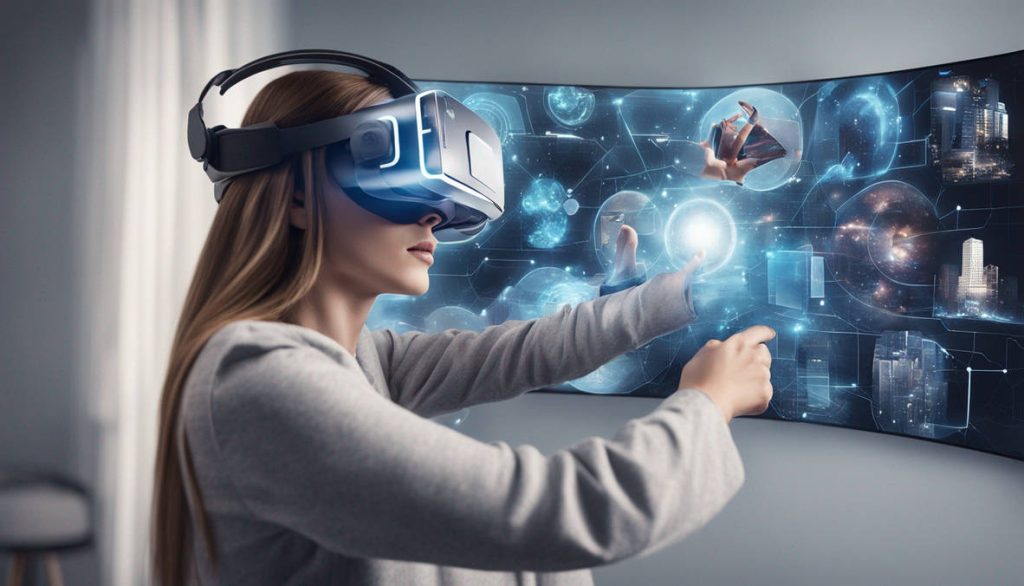Augmented Reality (AR) and Virtual Reality (VR) are immersive technologies that are rapidly changing how we interact with the digital world. AR overlays digital information onto the real world, while VR creates entirely immersive digital environments. These technologies have the potential to revolutionize various aspects of our lives, from entertainment and gaming to education, healthcare, and even social interaction.
Key Differences Between AR and VR:
- AR: Overlays digital information onto the real world, such as images, videos, and 3D models. Examples include Pokémon Go, Snapchat filters, and heads-up displays in cars.
- VR: Creates a completely immersive digital environment that simulates real-world experiences. Examples include VR gaming headsets, virtual reality training simulations, and virtual tours.
Applications of AR and VR:
- Entertainment and Gaming: Provide immersive and interactive gaming experiences, enhance live entertainment events, and create new forms of storytelling.
- Education and Training: Create interactive and engaging learning experiences, provide realistic simulations for training purposes, and facilitate remote collaboration.
- Healthcare: Assist in surgical procedures, provide rehabilitation therapy, and help patients manage chronic conditions.
- Retail: Enhance the shopping experience by allowing customers to visualize products in their homes or try on clothes virtually.
- Real Estate: Enable virtual tours of properties, helping potential buyers make informed decisions.
Benefits of AR and VR:
- Enhanced Engagement: Create more engaging and interactive experiences in various domains.
- Improved Learning: Facilitate more effective learning and training by providing immersive and realistic simulations.
- Enhanced Collaboration: Enable remote collaboration and communication in a more immersive and engaging manner.
- Improved Accessibility: Provide access to information and experiences that may be difficult or impossible to access in the physical world.
Challenges of AR and VR:
- Technological Limitations: Current AR and VR technologies still face limitations in terms of hardware, software, and content development.
- User Experience: Ensuring a comfortable and enjoyable user experience requires careful consideration of factors such as motion sickness and visual fatigue.
- Privacy and Security: Protecting user privacy and security in AR and VR environments is crucial to ensure widespread adoption.
The Future of AR and VR:
AR and VR technologies are rapidly evolving, with new and innovative applications emerging constantly. As these technologies become more sophisticated and accessible, we can expect to see even more transformative impacts on various aspects of our lives.



